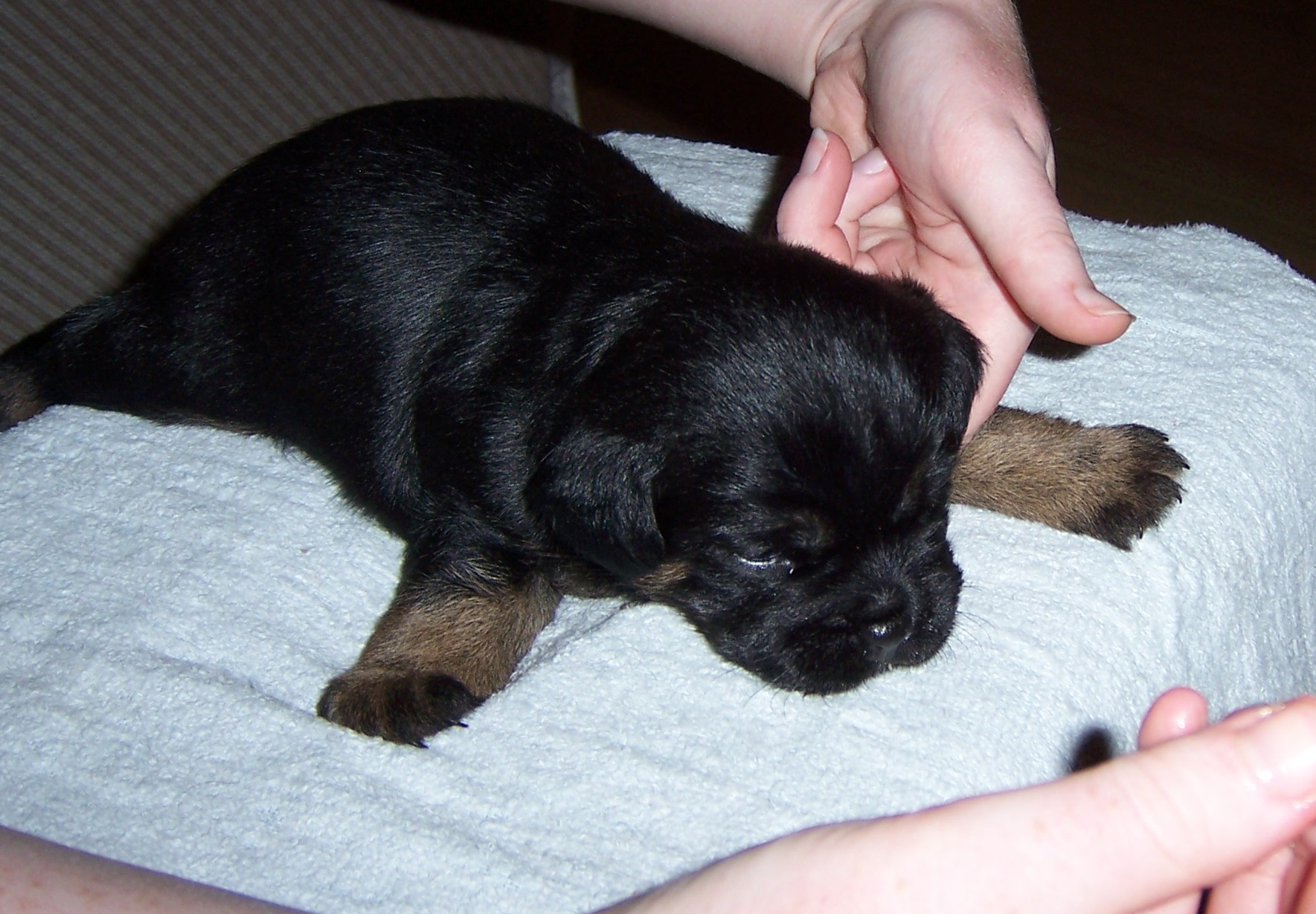Photographic Guide to Saving Swimmer Puppies
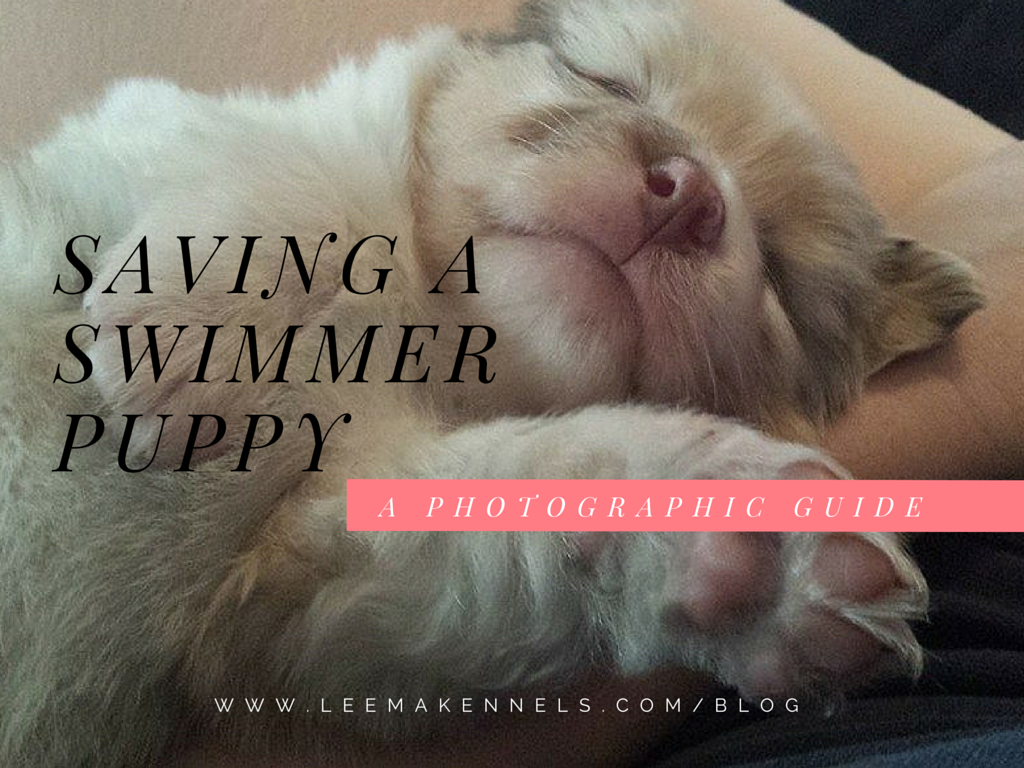
I’m proud that, for a number of years, the most popular post on this blog is ‘How to Save a Swimmer Puppy‘. However, I am frequently asked for photographs to illustrate the techniques I mentioned. I have recently had a litter of puppies, so I could stage images showing techniques on young puppies for saving a swimmer puppy.
Sling Method
This is by far the most simple method. I use a pillow case, suspended from the back of a chair, and then the puppy is placed inside the pillow case, meaning the puppy is basically in a hammock. When the puppy is placed in the hammock, is important that their legs are tucked underneath them, or the puppy is on their side.
It’s important that the puppy is not allowed to get cold while in this sling, too. You can warm the material of the hammock before placing the puppy inside, and then you can also put a heat pack underneath, on the ground, too (as hot air rises).
You can do this several times a day, ensuring that the puppy stays warm and gets plenty of time to feed in between its time in the sling. Puppies are surprisingly tolerant of this process and rarely object when their stomach is full and their a good temperature.
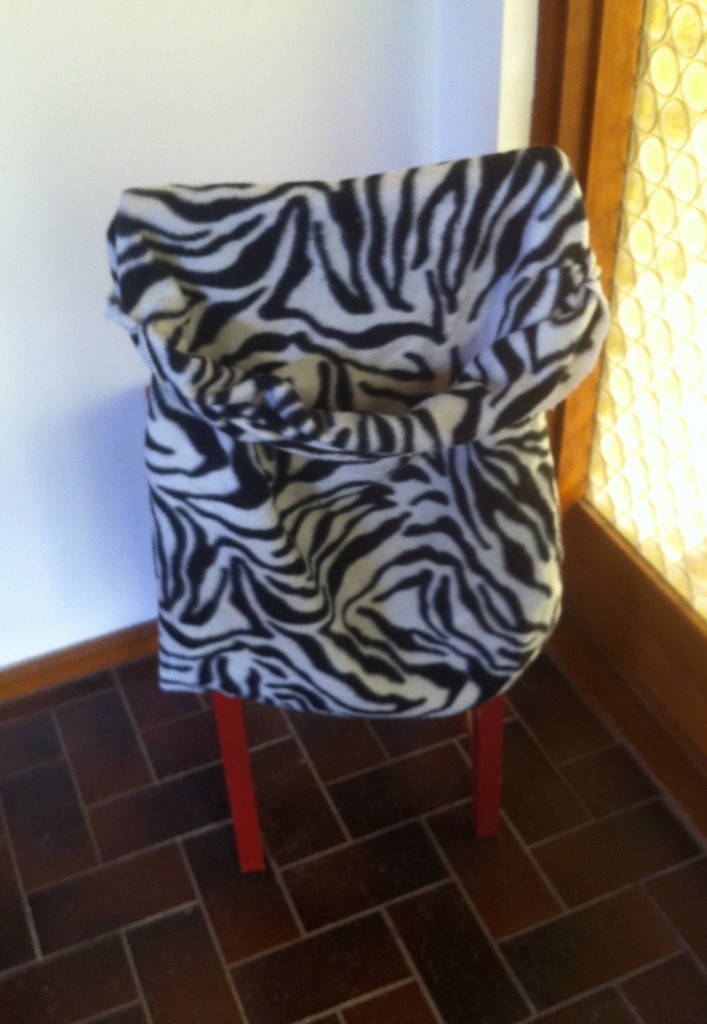
This is a (zebra-print) pillow case that is suspended on the back of a red chair. Inside, is a baby puppy.
This process will help to fix swimmer puppies.

A puppy (little black blob at the bottom) in a suspended sling. This will help puppies recover from swimmer syndrome.
Handcuff Method
Using electrical tape, you can create handcuffs that pull the puppies legs inwards, preventing them flailing out to the side as a swimmer. It’s important when using this method that you don’t do it too tight. (To be honest, when I’ve used this method, I’ve had it fall off numerous times a day because of how loose I make it. Fine by me!) You also want to make sure you don’t put too much length between the cuffs – remember the cuffs are supposed to pull the pup’s legs inwards, so if you make the cuffs too long, then the puppy’s legs are still going to be able to swim.
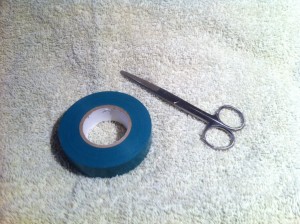
Tools required for the handcuff method: Electrical tape and a pair of scissors!
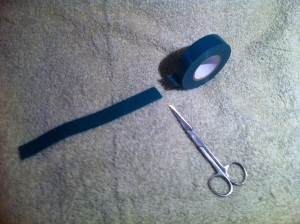
Step one: Cut a length of tape. We only need one length of tape, and the exact length will depend on your puppy and how far east west its legs are.

Step two a: Make one loop of the handcuffs. (This image is for illustration purposes – in reality you’d need the puppy’s leg in that loop!)

Step two b: Make a second loop of the handcuffs. (Photo for illustration purposes – in reality, there would be a puppy with a leg through each loop!)
I’m sorry that I am not much of a photographer, but here are some pictures to try to illustrate how these handcuffs look actually on a puppy.

A puppy in swimmer handcuffs.
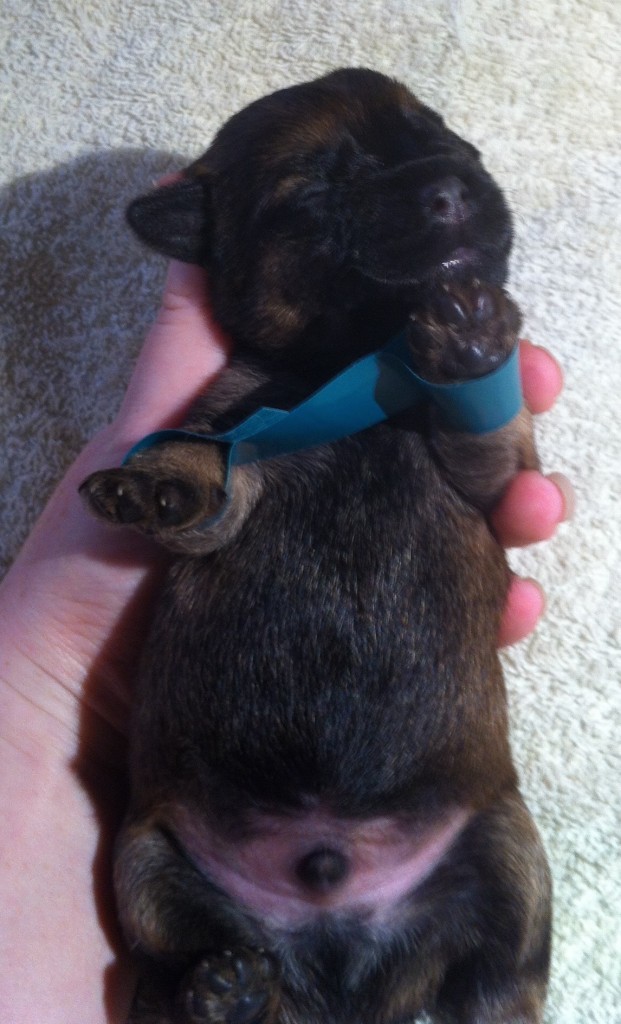
A puppy in swimmer handcuffs.

A puppy in swimmer handcuffs.
The benefits of the puppy handcuffs is that they can stay on for long periods of time, and the puppy can still feed and cuddle mum and litter mates while wearing them. Sometimes mothers will remove the handcuffs, and sometimes they fall off, so you are likely to have to put on new handcuffs several times a day. Initially, for a severely affected puppy, you may need to start with long handcuffs then reduce the distance between the handcuffs over time. Puppies are surprisingly tolerant of the handcuffs and rarely fuss once they’re on and they’re back at the milkbar!
For more tips please do see How To Save a Swimmer Puppy.

